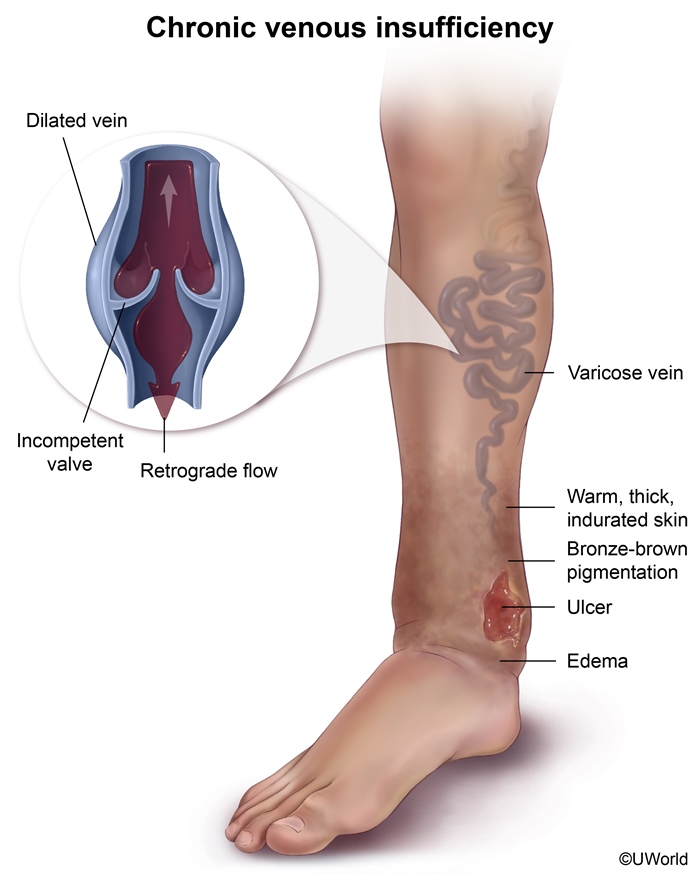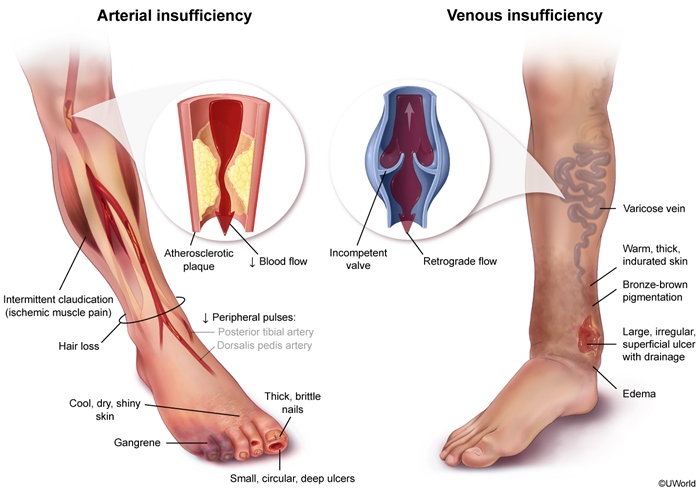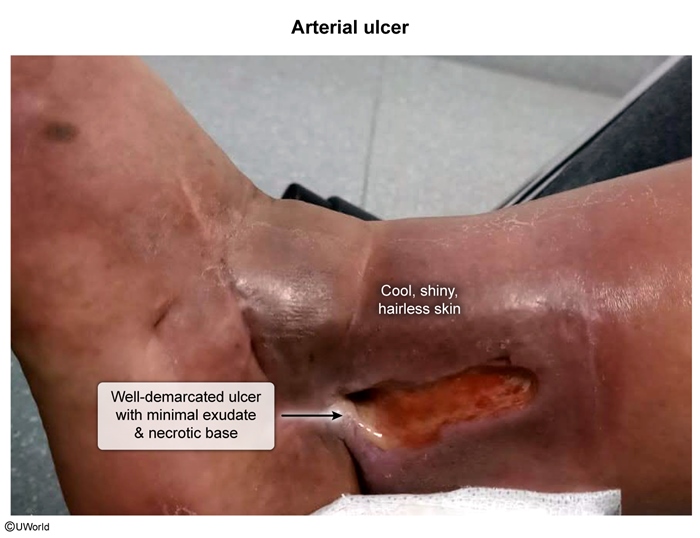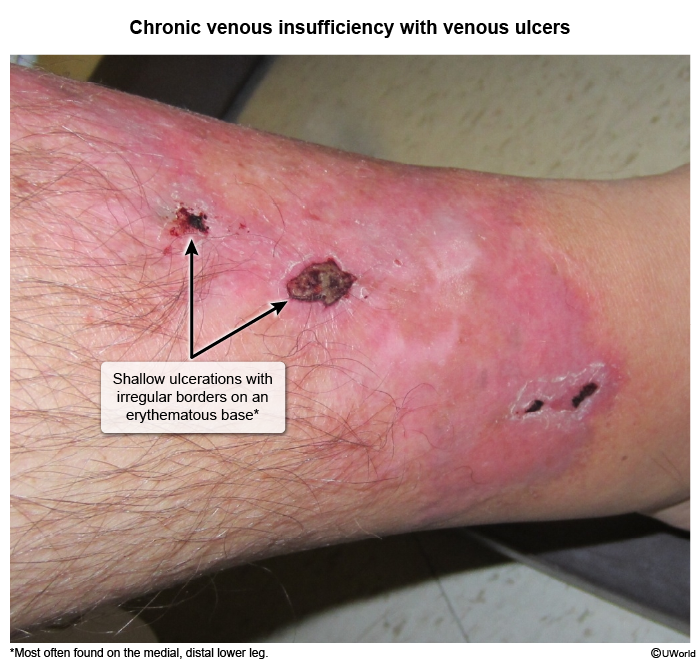Lower Extremity Ulcers
Article Sections
Introduction
Lower extremity ulcers are chronic skin defects that fail to heal due to underlying impairments in tissue perfusion, sensation, or integrity. Most ulcers fall into 3 primary categories: arterial, venous, and neuropathic, each reflecting a distinct pathophysiologic process. Less commonly, ulcers may result from other conditions (eg, infections, neoplastic transformation, inflammatory conditions such as vasculitis). Although ulcers often present with similar characteristics, management strategies and outcomes vary based on the specific etiology.
Pathophysiology
Most lower extremity ulcers develop from minor trauma in an environment compromised by arterial insufficiency, venous hypertension, neuropathy, or a combination of these factors.
Arterial ulcersArterial ulcers develop in areas of insufficient arterial perfusion, typically due to chronic peripheral artery disease (PAD). They often begin as minor traumatic wounds that fail to heal because reduced blood flow leads to ischemia, tissue hypoxia, and eventual necrosis. These ulcers typically occur at distal sites (eg, toes, lateral malleoli), where perfusion is naturally lowest and collateral circulation is limited (
Continue Learning with UWorld
Get the full Lower Extremity Ulcers article plus rich visuals, real-world cases, and in-depth insights from medical experts, all available through the UWorld Medical Library.
Figures



Images


